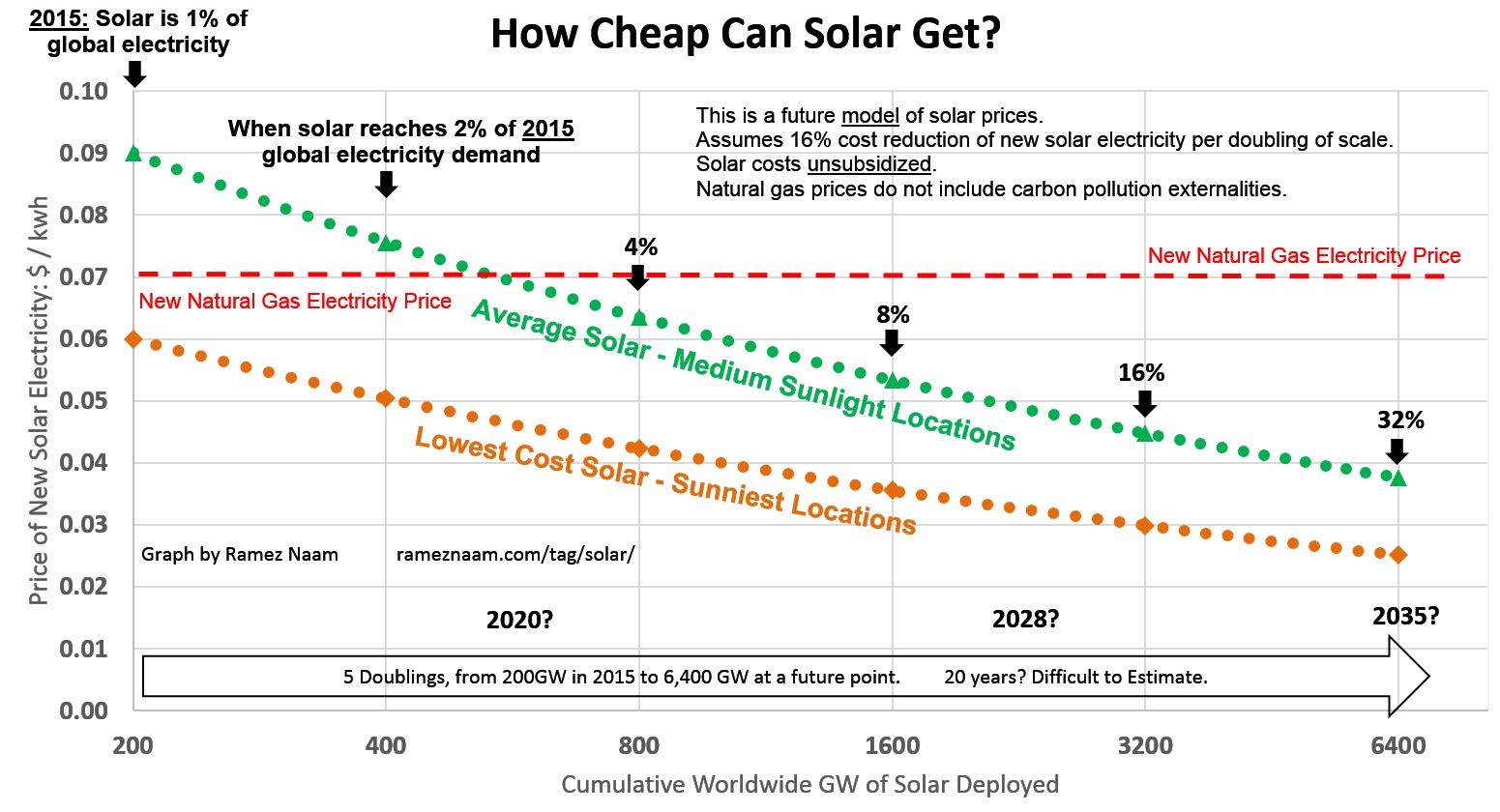Colorado, California, North Carolina: when will Georgia catch up in solar power?
What will it take to get the Georgia legislature to realize all Georgians
will benefit economically from much more solar power than
GA PSC in July required Georgia Power to buy?
And why should we permit
a methane gas pipeline to gash through Georgia
to profit executives in Houston and Juno Beach, Florida
when we could be deploying solar everywhere in Georgia
for
local jobs, profit, lower electric bills, and clean air and water?
Here’s
the study
that showed solar benefits outweigh costs in North Carolina,
The Benefits and Costs
of Solar Generation
for Electric Ratepayers
in North Carolina,
by R. Thomas Beach and
Patrick G. McGuire for Crossborder Energy, 18 October 2013.
Wholesale solar PPA prices provide perhaps the most dramatic
evidence of the continued decline in solar PV costs. Solar PPA
prices have fallen dramatically over the past several years, to the
point that, in some regions of the U.S., solar is now competitive
with other generation resources, including wind and natural gas.
Xcel Energy in Colorado recently announced that it is proposing to
add 170 MW of utility-scale solar to its system, with its CEO
stating “[f]or the first time ever, we are adding cost
competitive utility scale solar to the system.”33
The
California electric utilities make public each year the average PPA
prices for renewable contracts approved by the CPUC in the prior
year. Figure 3 shows the trend in the prices for their solar PV
PPAs; CPUC contract approval can occur up to a year or more after
bids are received, so the figure is indicative of prices through
roughly 2011.34
2012 solicitations for solar PPAs in California in
the 3 MW to 20 MW size range through the Renewable Auction Mechanism
(RAM) have yielded market-clearing prices in the
8 to 9 cents
per
kWh range.3

The Lawrence Berkeley National Lab (LBNL) conducts and publishes
regular national surveys of the installed costs of solar PV; these
surveys include Continue reading →

